Search Results for ‘oral health’
Canine Oral Papilloma Virus: Knowing the Signs and Risks
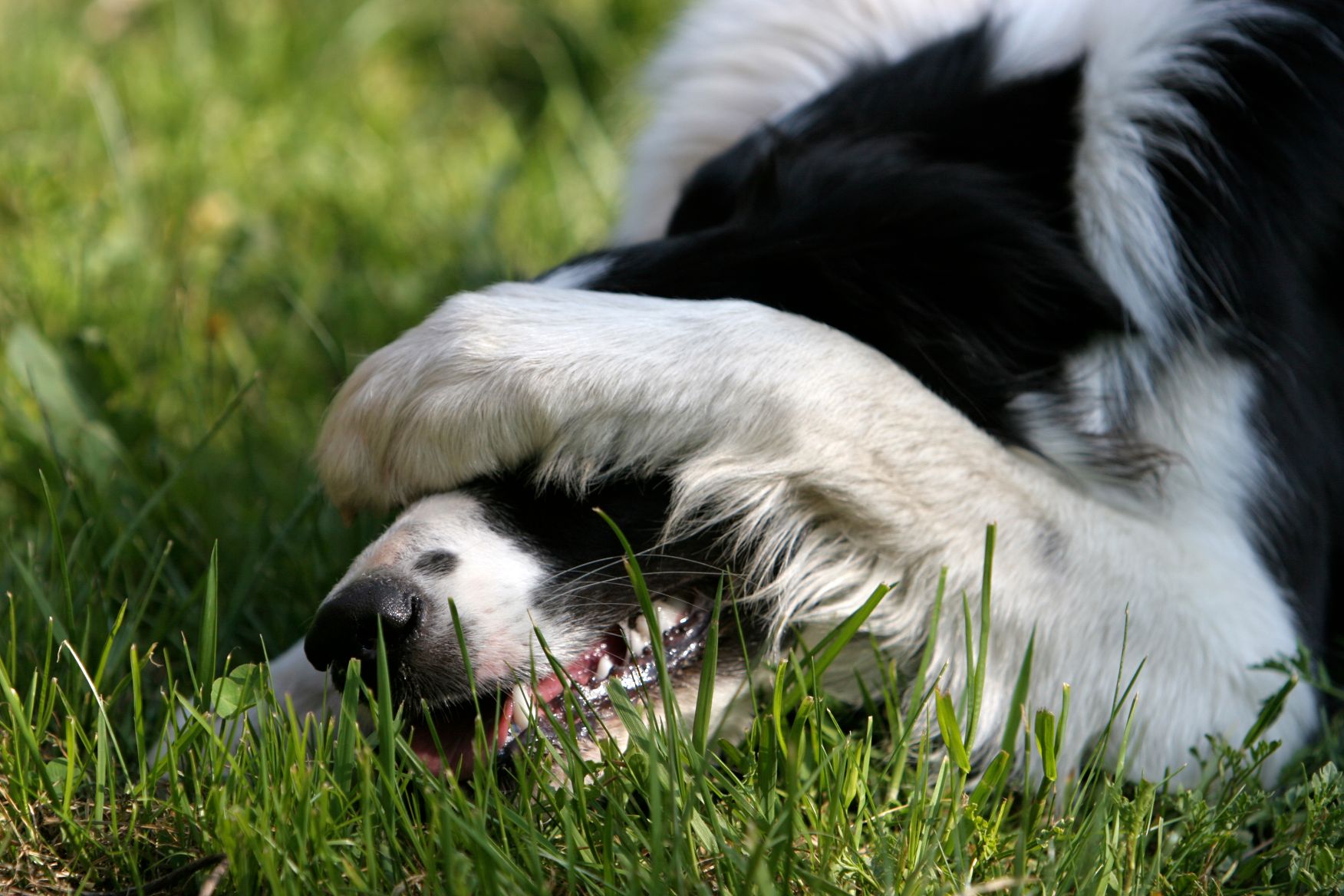
We often think of puppies as cuddly and adorable creatures, but that little wart-like bump you just noticed on your pup’s lip may not be so cute. While lumps and bumps on dogs are not unusual, when they occur in young and/or social dogs, canine oral papilloma virus, or COPV, is on the list of rule-outs for our team at Lone Tree Veterinary Medical Center.
Continue…Dog Breath! Dental Health for Pets
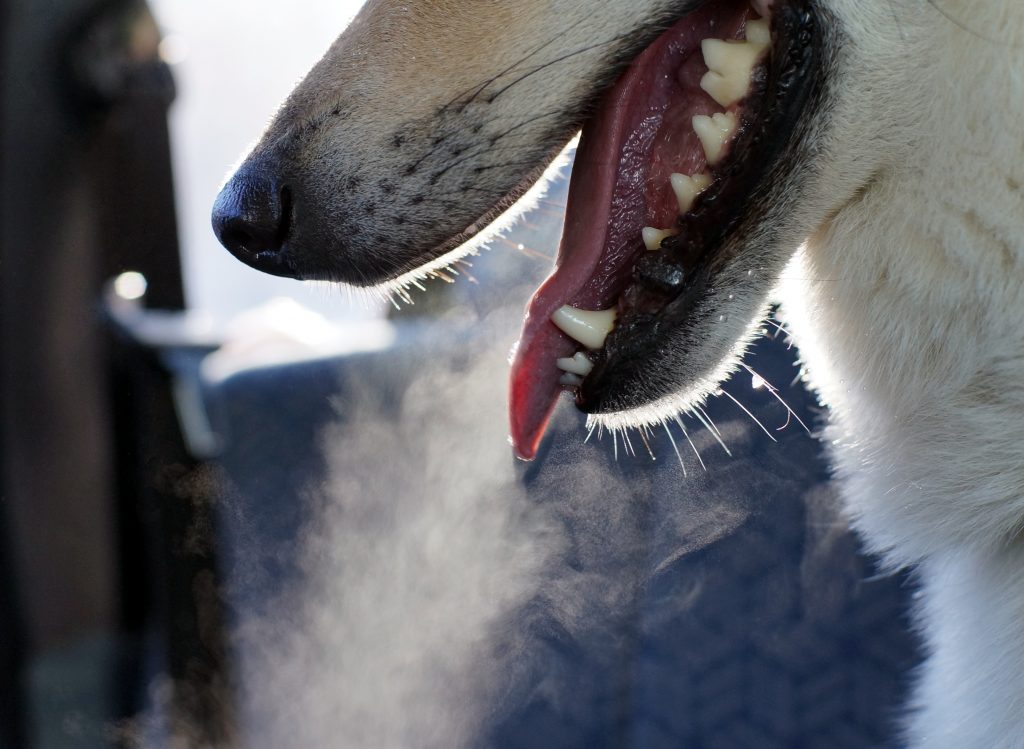
The health of our pets’ teeth and gums is a component of their care that is too commonly ignored. While most people would never entertain the thought of not brushing their own teeth, they usually don’t think of their pets’ teeth in the same way. Yet, according to the American Veterinary Dental Association, up to 80% of dogs and 70% of cats have some form of dental disease by the age of three. This serves as a reminder that it doesn’t take long for problems to develop when we fail to care for our pet’s teeth, even when they are young.
Without daily cleaning, bacteria in the mouth combine with saliva and food on the teeth and gums, causing a sticky plaque to form. This plaque eventually turns into tartar, a hard, mineralized build up.
Over time, plaque and tartar continue to accumulate, causing inflammation of the tissues around the teeth. This painful process is called periodontal disease and, when left unchecked, it results in both oral and systemic infection, tooth decay and loss of the teeth.
Preventive dental care in pets is very important, and Lone Tree Veterinary Medical Center wants you to understand how routine oral examinations, home dental care, and professional dental cleanings play into your pet’s overall well-being. Continue…
The Tooth Of The Matter: Why Pet Dental Health Matters
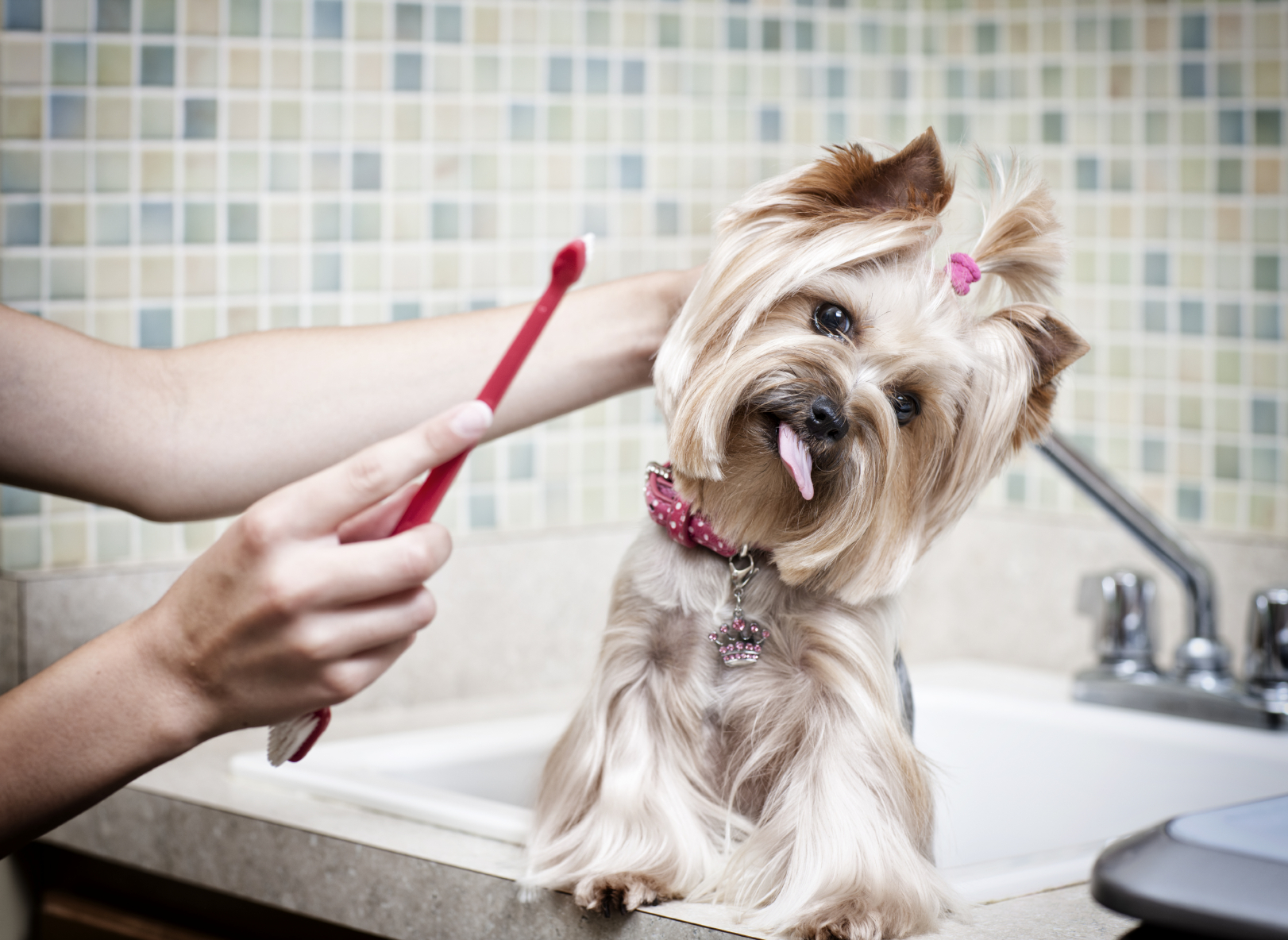 It wasn’t too long ago in human history that the idea of brushing a pet’s teeth or having them professionally cleaned was practically unthinkable, and the term “veterinary dentistry” didn’t even exist.
It wasn’t too long ago in human history that the idea of brushing a pet’s teeth or having them professionally cleaned was practically unthinkable, and the term “veterinary dentistry” didn’t even exist.
Fortunately for our pets, our knowledge of pet health has come a long way in recent years, and so has the field of veterinary dentistry. We now know that the right combination of home care, good nutrition, professional dental cleanings and exams can keep your pet healthy, pain free, and even extend his or her life. Continue…
Small Dogs Have Small Dog Needs

An endearing characteristic of small dogs is that they often come with big dog attitudes. Convincing as their “big dog” behavior may be, our small dogs still have some unique small dog needs.
At Lone Tree Veterinary Medical Center, we see a lot of small dogs at our facility and are happy to share some interesting observations on what makes them different from their larger canine counterparts, and how this affects their behavior and care.
Continue…Filling in the Blanks: Do Pets Get Cavities?
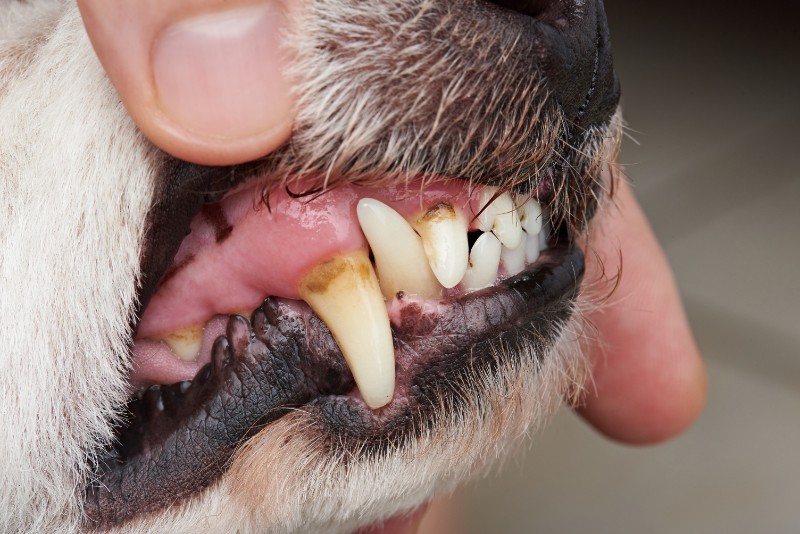
We brush our teeth twice a day, floss regularly, and visit the dentist every 6 months. Why do we do all this work? To prevent cavities, of course! We all want to avoid a date with the dentist’s drill, and most of us will do anything to keep those nasty little holes from developing in our teeth.
When it comes to pet dental care, however, (which is something we’re passionate about here at Lone Tree Veterinary Medical Center!), cavities aren’t always on the radar. Although rare, cavities in pets are certainly possible, and preventing them is important to keeping your pet’s teeth and gums healthy.
Continue…10 New Year’s Resolutions for Pets and Their Owners

Ringing in the New Year with a list of ways we’d like to improve our lives is a time-honored tradition. Whether it’s eating healthier, exercising more, or quitting a bad habit, there are endless ways to start 2019 off on the right foot. Pets can also benefit from lifestyle tweaks aimed at enhancing health and happiness. That’s why we’ve identified some New Year’s resolutions for pets that can help you both live your best and happiest lives together.
Continue…The Four Stages of Pet Dental Disease
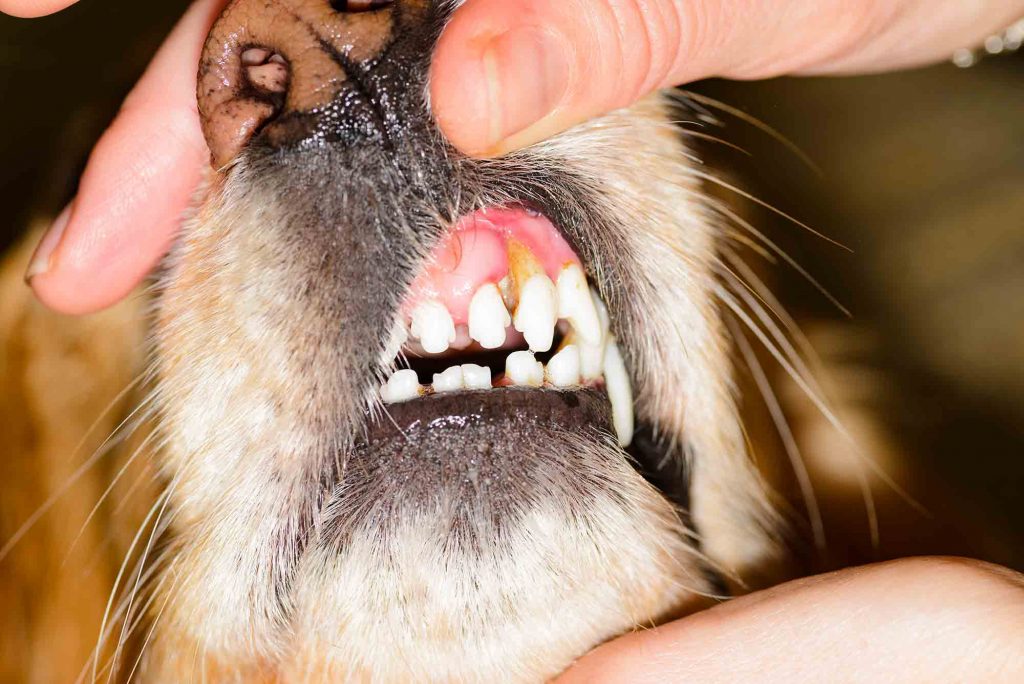 Pet dental disease, also called periodontal disease, is one of the most common clinical conditions seen by our veterinarians. This comes as no surprise when we consider that most adult dogs and cats show some signs of the disease by the time they reach 3 years of age. If left untreated, pet dental disease can lead to pain, tooth loss, infection, and even damage to the vital organs, such as the heart, liver, and kidneys.
Pet dental disease, also called periodontal disease, is one of the most common clinical conditions seen by our veterinarians. This comes as no surprise when we consider that most adult dogs and cats show some signs of the disease by the time they reach 3 years of age. If left untreated, pet dental disease can lead to pain, tooth loss, infection, and even damage to the vital organs, such as the heart, liver, and kidneys.
The dental health of our patients is important to us at Lone Tree Veterinary Medical Center. In recognition of National Pet Dental Health Month, which is observed every February, we’d like to place the spotlight on periodontal disease and what pet owners can do to prevent and treat this serious condition.
So Fresh and So Clean: The Importance of Pet Tooth Brushing
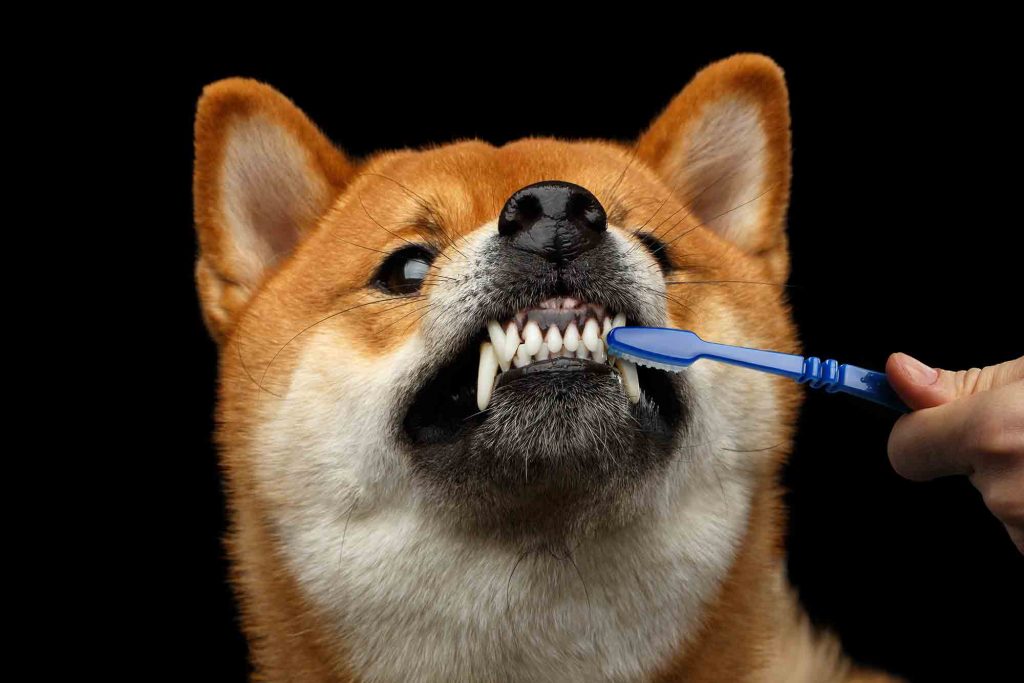 Can you imagine never brushing your teeth? The idea probably seems distasteful to you, but it’s an unfortunate reality for many pets.
Can you imagine never brushing your teeth? The idea probably seems distasteful to you, but it’s an unfortunate reality for many pets.
Studies show that roughly 73% of cat owners and 43% of dog owners admit to never having brushed their pet’s teeth. While this may not seem like a serious issue for your pet, poor oral hygiene can lead to periodontal disease, pain and tooth loss. Moreover, the bacteria from dental disease can spread throughout the body leading to systemic health issues and a shortened life span.
If you’ve never given much thought to your pet’s oral health, it’s not too late to start taking care of their teeth. While there are several ways you can help keep your pet’s teeth healthy, daily tooth brushing is the single most effective way to prevent dental disease and associated problems.
The purpose of pet tooth brushing daily is to remove the sticky plaque that develops on the teeth before it hardens and forms into tartar. Unfortunately, once tartar has formed, it cannot be brushed off and will require a professional dental cleaning to be removed.
Beneath The Surface: The Lowdown On Anesthesia-Free Pet Dental Cleanings
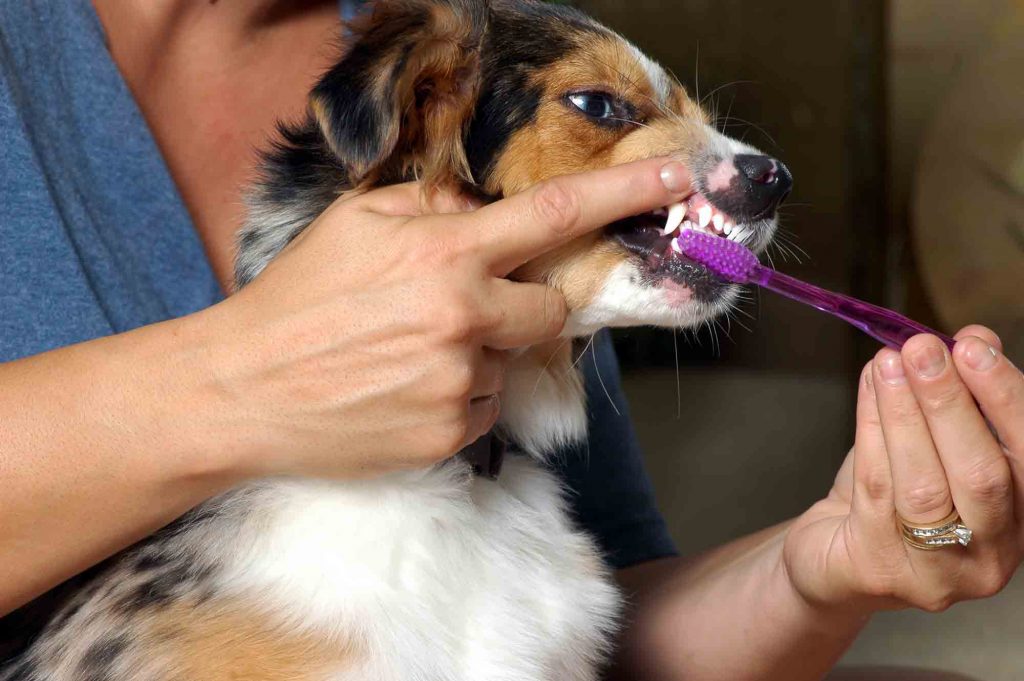 We are frequently asked about anesthesia-free pet dental cleanings, which have grown in popularity in recent years. This is the practice of performing a dental cleaning on a pet, which involves scaling (cleaning and scraping) the pet’s teeth to the gumline, without the use of general anesthesia.
We are frequently asked about anesthesia-free pet dental cleanings, which have grown in popularity in recent years. This is the practice of performing a dental cleaning on a pet, which involves scaling (cleaning and scraping) the pet’s teeth to the gumline, without the use of general anesthesia.
The popularity of anesthesia-free dentals is mostly due to marketing campaigns that promote the anesthesia-free method as a less expensive alternative to a dental cleaning that is performed while the pet is under general anesthesia. Unfortunately, it is also based on misinformation regarding what is really involved in cleaning a pet’s teeth. Marketers for anesthesia-free dental cleanings also fail to mention that these dentals often make a pet’s oral problems worse and, in many cases, involve abuse and cruelty.
For pet owners seeking to minimize the number of times a pet has to be “put under” with general anesthesia, the anesthesia-free idea may seem like a great option, but the procedure is wrought with many risks and problems that, in our opinion, outweigh any perception of benefit.
The Ins and Outs of Pet Home Dental Care
 Dental care isn’t just for humans. By now, most pet owners are aware of the importance of good dental hygiene for their pets, and this is evidenced by the hundreds of pet home dental care products available to pet owners everywhere. But, do these treats, chews, rinses, sprays, and water additives really have what it takes to keep your pet’s mouth in tiptop shape?
Dental care isn’t just for humans. By now, most pet owners are aware of the importance of good dental hygiene for their pets, and this is evidenced by the hundreds of pet home dental care products available to pet owners everywhere. But, do these treats, chews, rinses, sprays, and water additives really have what it takes to keep your pet’s mouth in tiptop shape?
Brushing is Best!
First, and foremost, there is no substitute for daily brushing when it comes to the care of your pet’s teeth. Although, for many, the task may seem daunting, it needn’t be. Brushing your dog or cat’s teeth can take just a minute a day and the pet specific toothbrush and toothpaste products we recommend are safe and easy to use.

